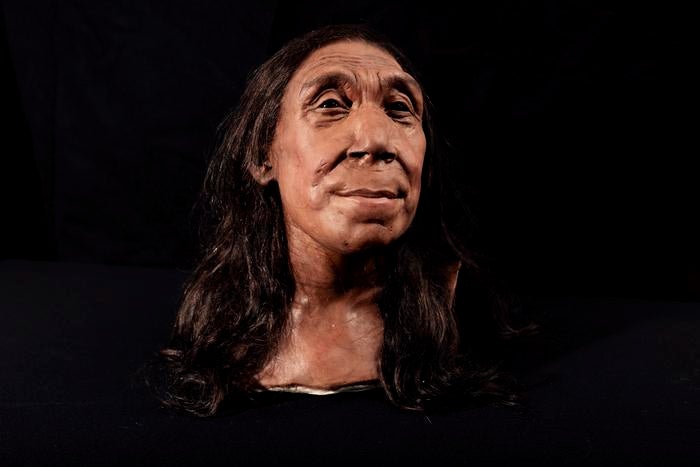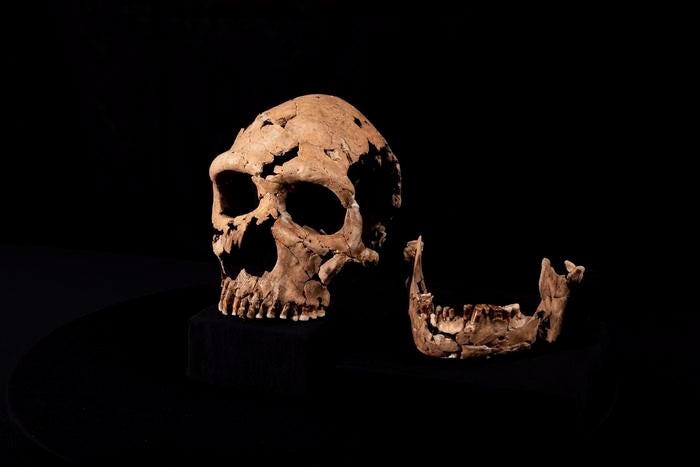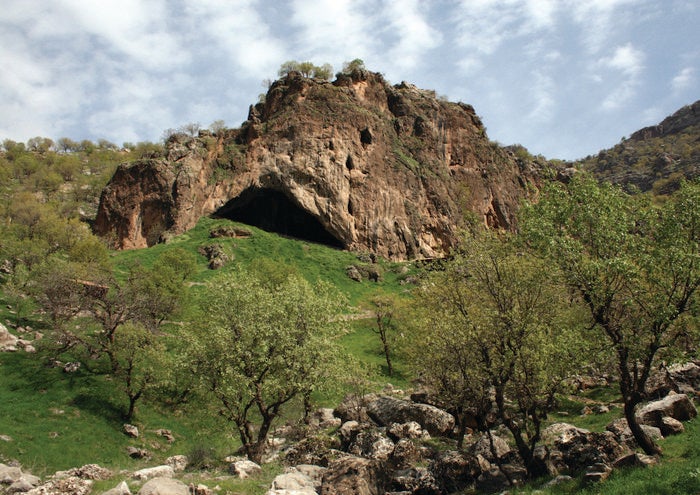Face of Neanderthal woman buried in Iraqi cave 75,000 years ago revealed
‘Shanidar Z’ found in cave where Neanderthals repeatedly returned to bury their dead
Your support helps us to tell the story
From reproductive rights to climate change to Big Tech, The Independent is on the ground when the story is developing. Whether it's investigating the financials of Elon Musk's pro-Trump PAC or producing our latest documentary, 'The A Word', which shines a light on the American women fighting for reproductive rights, we know how important it is to parse out the facts from the messaging.
At such a critical moment in US history, we need reporters on the ground. Your donation allows us to keep sending journalists to speak to both sides of the story.
The Independent is trusted by Americans across the entire political spectrum. And unlike many other quality news outlets, we choose not to lock Americans out of our reporting and analysis with paywalls. We believe quality journalism should be available to everyone, paid for by those who can afford it.
Your support makes all the difference.Archaeologists have reconstructed the human-like face of a Neanderthal woman who lived 75,000 years ago in a cave where the extinct species may have conducted unique funerary rituals.
Bone fragments of the Neanderthal woman, named Shanidar Z, were first unearthed in 2018 from a cave in Iraqi Kurdistan where her people may have repeatedly returned to lay their dead to rest.
Studies since the 1950s have shown that the Neanderthals buried their dead in the cave and carried out funerary rituals, such as laying them to rest on a bed of flowers.
In fact, evidence gathered from this cave site first suggested that the Neanderthals were far more sophisticated than the primitive creatures many had assumed them to be based on the stocky frame and ape-like brow associated with this archaic species of human.
Although Neanderthal people, who are thought to have died out 40,000 years ago, had skulls quite different from those of humans, the rebuilt face of this Neanderthal woman – thought to have been in her forties when she died – shows that their appearance was human-like.
The findings are revealed in a new documentary, Secrets of the Neanderthals, produced by the BBC and released on Netflix worldwide.
“Neanderthal skulls have huge brow ridges and lack chins, with a projecting midface that results in more prominent noses,” said Dr Emma Pomeroy, from Cambridge University’s archaeology department. “But the recreated face suggests those differences were not so stark in life.”
She continued: “It’s perhaps easier to see how interbreeding occurred between our species, to the extent that almost everyone alive today still has Neanderthal DNA.”

The woman’s remains, including a skull flattened to around 2cm thick, are some of the best-preserved Neanderthal fossils found this century, researchers said.
Her head is thought to have been crushed, possibly by rockfall, soon after her death, likely after her brain decomposed but before her skull filled with dirt.
After carefully exposing the remains, including her skeleton almost to the waist, Cambridge researchers used a glue-like consolidant to strengthen the bones and surrounding sediment.
They removed Shanidar Z in small foil-wrapped blocks from under 7.5 metres of soil and rock within the heart of the “flower funeral” cave.
They then pieced together more than 200 pieces of her skull to return it to its original shape, including her upper and lower jaws.
“It’s like a high-stakes 3D jigsaw puzzle. A single block can take over a fortnight to process,” said Dr Pomeroy, who features in the new documentary.
The researchers surface-scanned the reconstructed skull and 3D-printed it, further adding layers of fabricated muscle and skin to reveal her face.

Analysis from the dig suggests that Shanidar Z was laid to rest in a gully formed by running water, which had been further hollowed out by hand to accommodate her body.
She had been leant against the side, with her left hand curled under her head, and a rock had been placed behind her head.
The woman’s skeleton is the fifth to be found in a cluster of bodies buried at a similar time in the same location, behind a two-metre-tall vertical rock at the centre of the cave.

The researchers also found traces of charred food, including carbonised pieces of wild seeds and nuts in the soil around the body cluster, suggesting that the Neanderthals may have prepared food in the presence of their dead.
“The body of Shanidar Z was within arm’s reach of living individuals cooking with fire and eating. For these Neanderthals, there does not appear to be that clear separation between life and death,” Dr Pomeroy said.
“Our discoveries show that the Shanidar Neanderthals may have been thinking about death and its aftermath in ways not so very different from their closest evolutionary cousins, ourselves,” said archaeologist Graeme Barker, who led the excavations at the cave.
The cave may have served as a landmark for the Neanderthals as it appears to have been a unique site for repeated burials, the researchers said.
“We can see that Neanderthals are coming back to one particular spot to bury their dead. This could be decades or even thousands of years apart,” Dr Pomeroy said. “Is it just a coincidence, or is it intentional, and if so what brings them back?”

Join our commenting forum
Join thought-provoking conversations, follow other Independent readers and see their replies
Comments